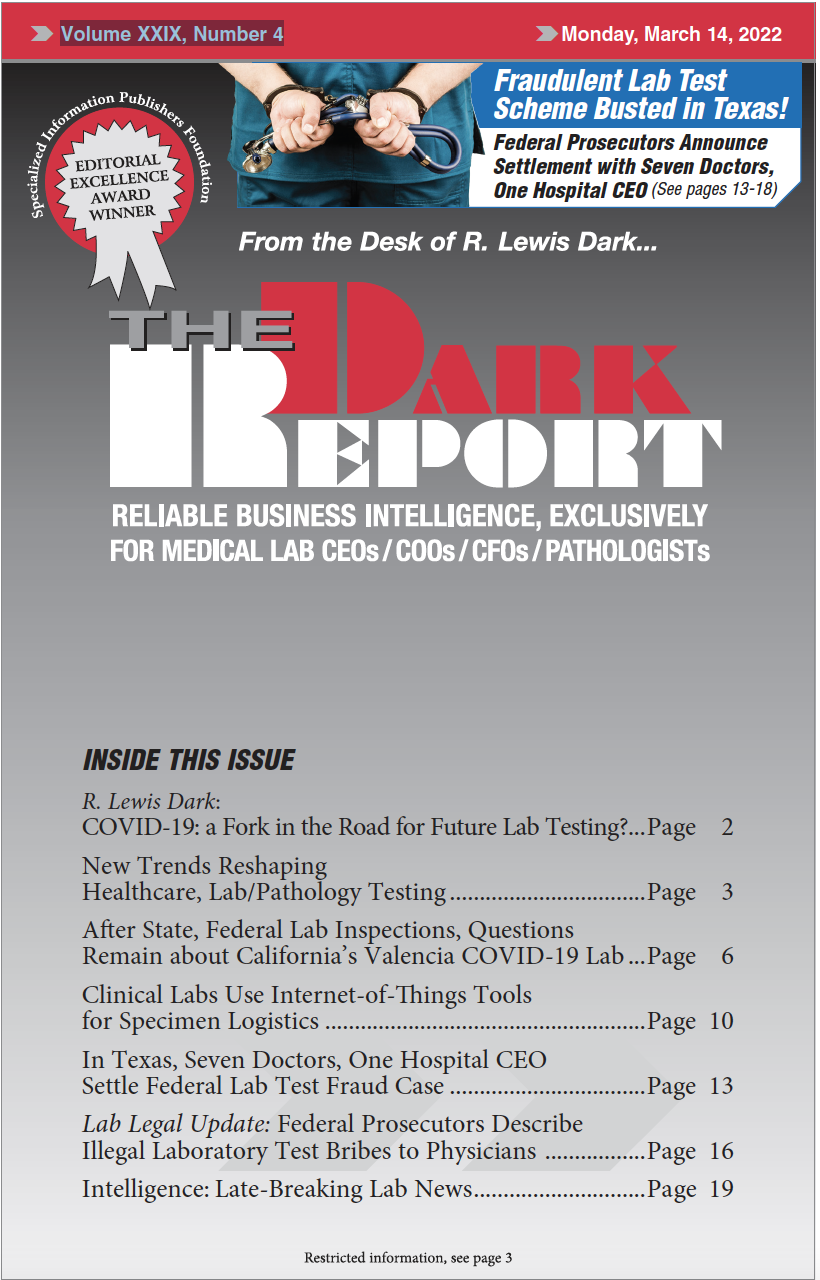CEO SUMMARY: Internet of Things (IoT) devices have proven adept at managing logistics, and BoxLock uses the technology to help clinical labs and pathology groups monitor pre-analytic specimen collections. Interpath Laboratory also has found IoT tools to be beneficial in providing greater accountability during specimen pickup and improving customer service. THERE MAY BE NO GREATER RISK …
Labs Use IoT Tools for Specimen Logistics Read More »
To access this post, you must purchase The Dark Report.


